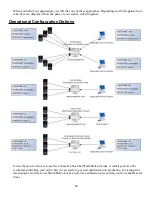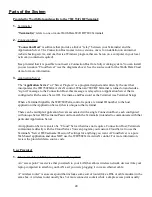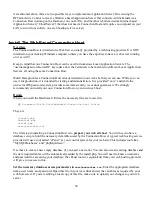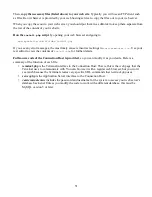
Communication Diagram for Using a “Cloud” Application Server
Worth Data provides full demos with source code for both the Connection Host and “Cloud” approach.
These are installed with the utility software or download them from
www.worthdata.net
You can see that there a numerous ways that the necessary connectivity can be achieved. The bottom line
here is that, depending on the approach you take, the Terminals and the Application Server must be able to
access the Connection host over the Internet, or the Terminals must be able to connect with a Cloud Server
over the Internet.
Each Terminal (and computer/router/etc.) is identified on your LAN and on the Internet LAN by a MAC
(Media Access Control) address. This like a serial number and every single device attached to the Internet
and every existing LAN installation has a unique MAC address number. This looks something like “
12-
34-56-78-9A-BC
”. Terminals communicating the an Application Server through a Connection Host are
tracked by their MAC address.
Devices on a LAN (and on the Internet) are also identified by an IP address. This looks something like
“192.168.1.22”. Most network installations use a DHCP server, which is simply a program running
someplace on your LAN that manages IP addresses and issues them as appropriate to devices (like
computers and Terminals) on your LAN that are configured to use a DHCP server.
Many small networks have a DHCP server running in the wireless access point or DSL modem. DHCP
server software usually comes with (and is pre-installed on) your wireless router or DSL modem. Check the
documentation for your network devices for details.
It is important that the Connection Host be running on a computer that is assigned a “static” IP address or a
URL that is managed through standard or dynamic DNS, or something similar.
The IP address of a particular terminal can also be obtained. Once an 7802 RF Terminal is signed in, it
receives messages from the (user created) Application Server via the Connection Host. The terminal
responds back to the Application Server program with data that was keyed or scanned by the terminal's user.
The host application program processes the data and sends back the next prompt. Each 7802 RF Terminal
has a unique hardware ID code (MAC address). The host program can obtain any terminal’s MAC address
or, for the sake of compatibility with programs written for 70/700 series terminals, resolve terminal
addresses to a single character Terminal ID (0-9,A-Z, a-z, and -=) by using the WD7802Term ActiveX
component.
37






























